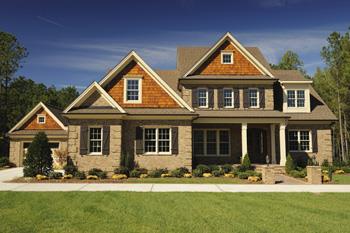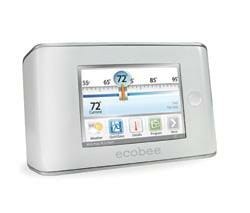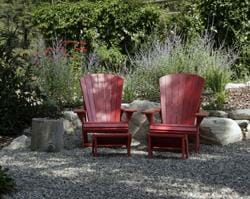Spinning Green into Gold: Eco-nomical Living – Building Smart; Saving the Enviornment and Your Money Too
 Green is everywhere. Green economy, green jobs, green revolution, even a green TV channel. In fact, more and more people are going green every day. Even though green building may sound expensive, it doesn’t have to be. Here are some easy ways to build an eco-friendly home that can help save the planet and save you money, too.
Green is everywhere. Green economy, green jobs, green revolution, even a green TV channel. In fact, more and more people are going green every day. Even though green building may sound expensive, it doesn’t have to be. Here are some easy ways to build an eco-friendly home that can help save the planet and save you money, too.
Going green is not an all or nothing proposition. Anything you do to lessen your impact is a good thing. One of the best ways to be eco-friendly is to use fewer resources.
Passive Solar Design
Optimal positioning of your new home on the homesite to take advantage of the suns rays during summer and winter is the easiest way to reduce future energy bills. Homes constructed as passive solar design use the natural movement of heat and air to maintain comfortable temperatures.
Home design can maximize the benefits it receives from the sun with standard construction features. Passive solar design takes advantage of local breezes and landscape features such as shade trees and windbreaks. Making the building the right shape, properly placing its windows and pointing it in the right direction can cut the building’s total energy use by 30 to 40 percent at no extra cost.
Insulation
Homes consume as much as 50 to 70 percent of their total energy for heating and cooling, so let’s start here. The easiest and probably least expensive thing to do is insulate.
There are many effective green products made from recycled materials such as cotton, cellulose, wool and even the age-old standby-fiberglass. Owens Corning is now one of the largest users of recycled glass in the world, and now makes a fiberglass insulation with 40 percent or more recycled glass. Using recycled glass to make insulation cuts the energy needed to produce it by 13 percent and reuses a resource that typically went into the landfill. No matter which insulation you choose, installed correctly, it will help keep your house more comfortable while saving energy and money.
Windows and Doors
If you look at windows and doors from an efficiency standpoint, they are basically holes in the insulation you’ve installed in your house. Holes provide an avenue for heated or cooled air to sneak out. Houses typically tend to lose 25 percent of their heat through windows. To save your green, you need to buy energy-efficient windows. Low E windows save energy by reflecting heat out on hot days and reflecting heat in on cold ones. Low E windows consist of a thin coat of metal applied to the inside of the glass with argon between the glass panes on the inside to prevent the metal from oxidizing.
Don’t forget the doors. Make sure they seal well so that air can’t escape around them.
Now that your home is well insulated, the next task is to heat and cool it in the most eco-friendly manner. While there are many options, the greenest way may be geothermal.
Heating and Cooling
Geothermal heat pumps are over 40 to 70 percent more energy efficient than other standard options. The geothermal heat pump operates by taking advantage of the stable temperature of the earth itself. Pipes buried underground circulate water to collect heat from the earth to distribute it to the house in the winter and to pull the heat from the house and discharge it into the ground to cool in the summer. The heat collected or discharged costs nothing to generate since it comes from the earth itself, and the best part-it’s completely renewable and non-polluting. Geothermal is about as green as it gets.
Unfortunately geothermal will cost more to install. How much depends on where you live and the size of the system required. Fortunately, with the installation of qualified geothermal systems, you can receive a Federal Tax credit of 30 percent of the cost of the system with no upper limit until December 31, 2016. This tax credit is good for new and existing homes, as well as primary and secondary homes. With geothermal, you can get the good green feeling in both your heart and your wallet.
 Programmable Thermostats
Programmable Thermostats
Now that your house is well insulated and you have installed highly efficient heating and cooling, what sense does it make to heat and cool when you aren’t around? The solution is a programmable thermostat. But programmable is just the beginning.
Today you can purchase a WIFI enabled thermostat for not much more than a standard programmable one. A company named Ecobee (www.ecobee.com) not only offers the ability to control its user-friendly smart thermostat through a Web portal, but also offers an iPhone app that allows for remote mobile control of your household energy use. Not only can you program your heat to be off when you are away during the day, but you can simply use your phone from basically anywhere to turn down the heat when you leave for a trip and back up and toasty when you expect to return. This is not only green, but also way cool. And since you aren’t heating or cooling your home when you don’t need to, you save resources, earth’s and your own.
Water Heating
By this point your house is starting to look pretty green, but there is so much more that can be done to conserve resources. Water heating can account for 14 to 25 percent of the energy consumed in your home. Because traditional water heaters basically heat water all the time and not just when you need it, they are at best 80 to 85 percent efficient. Tankless water heaters only heat water when you need it and can be up to 98 percent or more efficient.
Water Usage
And, what about all that water being used? The simplest thing to do is to use less. Installing a single 1.28-gallon High-Efficiency Toilet (HET) saves up to 16,500 gallons of water each year over less efficient toilets found in more than half the homes in the U.S.
Another thing to consider, especially if you already have your water closet, is that companies such as MJSI (www.gomjsi.com) and (www.flushchoice.com) offer inexpensive and easy, drop-in conversions for most toilets to help save 50 to 70 percent water by using only the amount of water
required. Who knew doing something green could be so easy?
 Landscaping
Landscaping
Your landscaping can also help you conserve energy. The Department of Energy (DOE) estimates that the proper placement of as few as three trees can save the average household between $100 and $250 annually in energy costs.
Because trees and shrubs shade the ground and evapotranspire (release water vapor), air temperatures below trees can be as much as 25 degrees cooler than air above a street. Planting deciduous trees (which lose their leaves in the fall) provides summer shading, which helps reduce summer cooling needs, while opening up your home to warmth from winter’s solar rays. Conversely, planting evergreen trees and shrubs north and northwest of a property as a windbreak can dramatically lower energy costs by channeling winds away from or over a house.
When deciding your overall landscaping plan, you might want to consider xeriscaping-utilizing plants and shrubs that reduce or eliminate the need for supplemental watering.
While making these choices may seem obvious and may not be as green as using recycled materials, low VOC paints and solar panels (all which are also excellent ideas), these simple solutions are easy, relatively painless and highly effective ways to help reduce cost and reduce impact on the finite resources. You can have a positive green impact on our planet.
Request information from these Green Communities
Receive your complimentary Relocation guide and magazine

